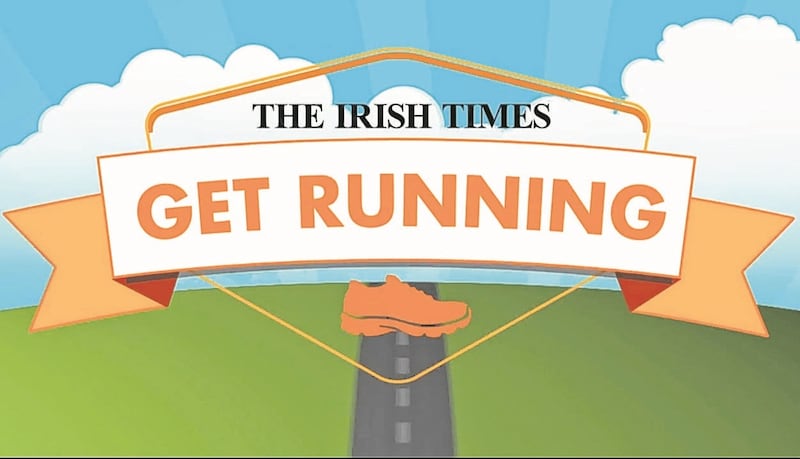Running your lifetime fastest time over a certain distance is incredibly empowering. The feeling at the finish line is the reason so many of us keep on running.
The chase for this elusive personal best (PB) tempts runners from the elite to the novice. In fact, some runners measure their running success entirely based on this number.
Although rewarding when it all goes to plan, the stress and pressure to hit a time target can be frustrating and challenging.
Beginners’ luck
Consider the 5k distance. For a beginner, they enjoy the buzz of hitting a PB quite regularly. As the body adapts to running and both strength and confidence increase, the runner can comfortably improve their time consistently in the first year of running. Without any specific speed training, the PBs become a welcome reward and motivator for the new runner.
Chasing the clock
As the months and years progress, personal bests are harder to come by without significant effort. Fitness and pace start to plateau and breaking through the PB barrier is not as simple as keeping up a regular running routine.
As the quick wins of the early days decrease, many runners can become frustrated with their lack of progress. It’s worth noting that at this stage the body is a little older than when running started and may be carrying some niggles, injuries or tight muscles too.
Stress of the clock
The pressures of focusing too much on PBs can take its toll on runners. If your success as a runner is purely measured by this number, there is constant focus on the clock which can lead to excessive tension in the body and in certain situations overtraining can occur.
Remember that speed doesn’t have to bring stress and tension to the body. To be able to run relaxed while fast is essential for injury prevention regardless of whether your PB is 15 minutes or 50 minutes over 5k.
How to get faster
We cannot expect the body to continually get faster if we don’t challenge it and adapt our training. It doesn’t come easy. You have to work for it. You will remain at the same pace if you always train at the same pace.
If you are serious about improving speed then running training needs to include speed intervals, hills, technique, mobility and strength work. These will improve speed, endurance, confidence and self-belief.
Baby steps
If you are new to speed work, start by building in one speed session into your weekly routine. Respect the impact that speed places on the body ensuring you are well warmed up before you start. Run for 30 minutes. Vary the pace in this session by running four minutes comfortably followed by one minute fast. Do this six times in total.
Six of these speed intervals is plenty to introduce you to this type of training. Finish with a cooldown.
Getting older
The frustration of not being as fast as you used to be can take the novelty of running away from many passionate and dedicated runners. Runners who were successful in their teenage and early adult years may never get close to their PB again and motivation and enthusiasm can dip.
We need to keep the joy in running and find a measure that is reasonable to chase. There are age group categories in most races and park runs have an age grading system that allows you to compare your time against others allowing for age and gender.
An alternative PB
If a lifetime PB is not appropriate for you to aim for right now, maybe you could create a more realistic target. My current favourite is the PB created by our running coach Aoife at ForgetTheGym after she returned to running after having her first baby.
Her PBPB (post-baby-personal-best) became her new number. Her lifetime PB went on hold temporarily. Instead she focused on making gradual progress on her PBPB which was more rewarding, achievable and enjoyable.
Create your own PB
Consider what life events you have experienced that may have impacted your running. If your lifetime PB is a distant memory, should you be setting a different target?
You can choose to create any timeline for your new PB. Could you have a ‘post 40 PB’, post illness PB’or maybe a ‘post retirement PB’? Leave the past where it is and create a PB that you can bring into the future with you.
Your future of running
As the seasons of our life change we need to be more realistic about running potential. We need targets that are realistic yet challenging. The beauty of the PB is that it is not a competition with anyone else, it’s about becoming a stronger you.
Seeing improvements is what makes us reach further and keep lacing up our running shoes. It builds our sense of self-belief as well as physical and mental strength. There are not many sports that are lifelong. Make sure you don’t outgrow your love of running by becoming disillusioned with unrealistic expectations.

Sign up for one of The Irish Times' Get Running programmes (it is free!).
First, pick the programme that suits you.
- Beginner Course: This programme is an eight-week course that will take you from inactivity to being able to run 30 minutes non-stop.
- Stay On Track: The second programme is an eight-week course for those of you who can squeeze in a 30- to 40-minute run three times a week.
- 10km Course: This is an eight-week course designed for those who can comfortably run for 30 minutes and want to move up to the 10km mark.
Best of luck!


















